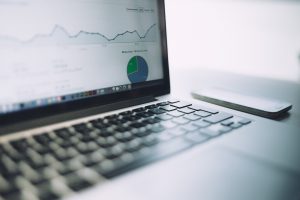Recurring weekly duties can be automated with the use of automated reporting tools. These tools make it simple to publish social network postings, establish background-operating email customer journeys, and maintain contact with significant donors or partners.

- Automatic reporting assists in the efficient collection of data.
- It saves time, reduces errors, and improves report accuracy.
How Nonprofits Can Use Automated Reporting
Nonprofit organizations often face the challenge of having to manage large amounts of data to track their impact, monitor their progress, and communicate with stakeholders. With the use of automated reporting, nonprofit organizations can save time and resources while improving the accuracy and consistency of their reporting.
In this article, we will discuss how nonprofits can leverage such automated tools to achieve their goals.
1. Efficient Data Collection
Nonprofits can use automated reporting tools to streamline the process of data collection. Automated tools can collect and analyze data from multiple sources, such as surveys, online forms, and social media, and convert it into a standardized format for analysis. This can help nonprofits save time and resources and reduce errors in data entry.
2. Timely and Accurate Reporting
Automated reporting can help nonprofits produce timely and accurate reports on their programs and activities. These reporting tools can generate automatic reports based on predefined criteria and schedule them for distribution. As a result, nonprofits can stay on top of their reporting requirements and meet deadlines.
3. Customized Reporting
Nonprofits can use automated reporting tools to create customized reports that meet the needs of different stakeholders. For example, nonprofits can create reports tailored to funders, board members, or program participants. These tools can generate reports that include only relevant data and present them in a format that is easy to understand.
4. Real-Time Monitoring
Nonprofits can use these reporting tools to monitor their programs and activities in real time. Automated tools can collect and analyze data as it is generated and provide real-time alerts on key metrics. Hence, nonprofits can respond quickly to changes in their programs and make data-driven decisions.
5. Improved Transparency
Reports that are automated can improve the transparency of nonprofit organizations by providing stakeholders with access to real-time data and reports. Nonprofits can use these reporting tools to publish their information on their websites or share them with stakeholders through email or social media. This can help build trust and credibility with stakeholders and increase transparency in their operations.
6. Better Decision-Making
Automated tools can help nonprofits make better decisions by providing them with timely and accurate data. Automated reporting tools can generate reports that highlight trends, patterns, and correlations in data, which can help nonprofits identify areas for improvement and make data-driven decisions.
Conclusion
Nonprofit organizations can benefit from automated reporting by saving time, reducing errors, and increasing the accuracy and consistency of their reporting. NGOs can also leverage automated reporting tools to streamline their data collection and reporting processes, produce timely and accurate reports, customize their reports, monitor their programs in real time, improve transparency, and make better decisions. By adopting automated reporting, nonprofit organizations can focus on their mission and achieve their goals more effectively.
If you enjoyed reading this article, please share your comments and suggestions with us at the bottom of the post. We would love to hear from you.
